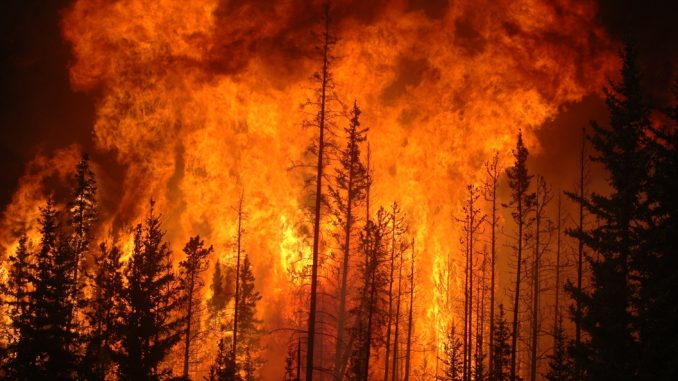
The wildfires which raged through California in 2020 were headline news around the world for the devastation that they caused to homes and the environment. Now, a new threat posed by mother nature burning everything to the ground has been discovered – the contamination of drinking water caused by a dangerous combination of wildfires and plastic pipes.
Experts in the United States had long been baffled by the presence of chemicals in the public water supply. Throughout 2017 and 2018, toxicity levels comparable to hazardous waste being dumped into water were discovered in underground distribution networks where contamination should have been all but impossible.
Extensive testing could find no trace of polluted water leaving treatment plants. There were no unnatural levels of contamination in water sources such as likes and reservoirs either. Yet by the time water had passed through pipework systems to reach homes and businesses, it was toxic enough to pose a threat to human health.
Benzene was the problematic compound which was entering the supply chain somewhere. Benzene is a carcinogen, meaning that those exposed to high doses face an increased risk of cancer in the long term.
In the short term, it can cause headaches, skin irritation, throat irritation, dizziness and in extreme cases, unconsciousness. There was clearly a very real threat to human health but still there seemed to be no clear cause as to what was behind the pollution.
The most polluted samples of water analysed had benzene present at a level 8,000 times the federal drinking water limit. This is 200 times the level which causes immediate health risks.
Eventually, it was realised that the contamination of public water was occurring in direct correlation to when wildfires were at their strongest. The scientists now had a theory – that heat from the wildfires was affecting pipework and causing subsequent contamination.
To test the theory, researchers took the types of plastics used on the public supply network, including polyvinyl chloride (PVC), high-density polyethylene (HDPE) and crosslinked polyethylene (PEX), and exposed them to temperatures of around 200°C.
They discovered that heating up the pipes caused the release of benzene and other chemicals. When the pipes then cooled, these chemicals leached into the water, contaminating it with harmful toxins. This was happening at 200°C – at their most extreme, wildfires can reach temperatures of 760°C.
Wildfires are becoming more frequent in the west of the United States with each passing year. In 2020, there were more than 52,000 recorded fires responsible for destroying more than 17,000 structures including properties connected to the water network via plastic pipes.
Each time such buildings are devastated by the flames, the pipes running beneath them leach toxic chemicals into the public water supply. The contamination can continue for weeks and months with the subsequent clean up operation running into many millions.
It is not just underground supply pipes scorched by wildfires which can pose a contamination risk to drinking water. If a property suffers fire damage and the temperature heats up plastic piping on the public supply network, then every other property in that the local area connected to that same section of pipe is at risk of contamination. Before you know it, entire towns can be affected with hundreds of people exposed to polluted drinking water.
The big question then is what can be done to stop such contamination? Some would say ban or prevent the use of plastic pipes, but that would ramp up the cost as metal is more expensive and vulnerable to corrosion. The lifespan of plastic pipes are what makes them so attractive.
When wildfires do occur, we now at least know enough about their effect on plastic pipes to be able to restrict the impact to humans. Carrying out a plastic pipe repair is not sufficient to prevent the ongoing contamination of drinking water; instead, entire systems must be replaced to guarantee the safety of drinking water from benzene and other chemicals.
There is one final way in which the contamination of drinking water by wildfires and plastic pipes could be prevented – by reducing the number of fires themselves. Climate change is responsible for the increasing frequency with which such natural disasters happen.
If we do more to save the planet, we could help to protect our water from becoming overly harmful.

Leave a Reply